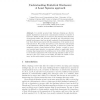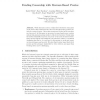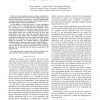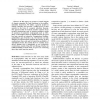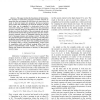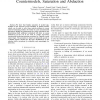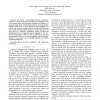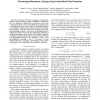138
click to vote
PET
2012
Springer
13 years 3 months ago
2012
Springer
It is widely accepted that Disclosure Attacks are effective against high-latency anonymous communication systems. A number of Disclosure Attack variants can be found in the litera...
127
Voted
PET
2012
Springer
13 years 3 months ago
2012
Springer
While Internet access to certain sites is blocked in some parts of the world, these restrictions are often circumvented using proxies outside the censored region. Often these proxi...
140
Voted
CSFW
2012
IEEE
13 years 3 months ago
2012
IEEE
—Social sign-on and social sharing are becoming an ever more popular feature of web applications. This success is largely due to the APIs and support offered by prominent social ...
125
click to vote
CSFW
2012
IEEE
13 years 3 months ago
2012
IEEE
—Formal methods have proved their usefulness for analysing the security of protocols. In this setting, privacy-type security properties (e.g. vote-privacy, anonymity, unlinkabili...
131
click to vote
CSFW
2012
IEEE
13 years 3 months ago
2012
IEEE
—In this paper, we propose a formal analysis of domain extenders for hash functions in the indifferentiability framework. We define a general model for domain extenders and prov...
113
Voted
CSFW
2012
IEEE
13 years 3 months ago
2012
IEEE
Abstract—This paper studies the foundations of informationflow security for interactive programs. Previous research assumes that the environment is total, that is, it must alway...
126
Voted
CSFW
2012
IEEE
13 years 3 months ago
2012
IEEE
—We show that Kripke semantics of modal logic, manifest in the syntactic proof formalism of labeled sequent calculi, can be used to solve three central problems in access control...
134
Voted
CSFW
2012
IEEE
13 years 3 months ago
2012
IEEE
—We present a secure (fully abstract) compilation scheme to compile an object-based high-level language to lowchine code. Full abstraction is achieved by relying on a fine-grain...
109
click to vote
CSFW
2012
IEEE
13 years 3 months ago
2012
IEEE
Abstract—This paper introduces g-leakage, a rich generalization of the min-entropy model of quantitative information flow. In g-leakage, the benefit that an adversary derives f...
142
click to vote
CSFW
2012
IEEE
13 years 3 months ago
2012
IEEE
The onion routing network Tor is undoubtedly the most widely employed technology for anonymous web access. Although the underlying onion routing (OR) protocol appears satisfactory...
